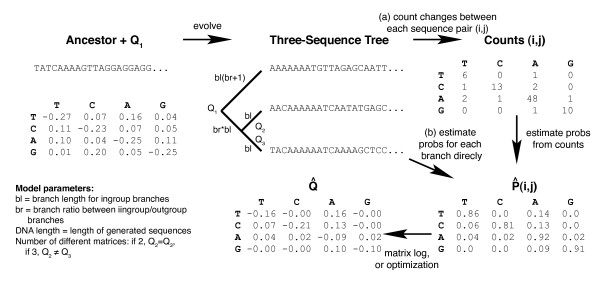Figure 1.
Overview of the workflow. The overall workflow is as follows. First, one or more random rate matrices (depending on parameter settings) is generated, and sequences evolved according to a three-taxon tree of known topology. These sequences are generated as an ungapped alignment, so alignment issues do not affect the result (i.e. we assume that the alignment process is perfect). Depending on the algorithm, we then either (a) infer counts that differentiate specific pairs of sequences, then infer the probability matrices for different branches by normalizing the count matrices, or (b) infer the probability matrices for different branches directly from the alignment. Finally, the rate matrices are inferred from the probability matrices (either by the matrix log method or the constrained optimization method), normalized to eliminate the time component, and compared against the original rate matrix or matrices used to generate the sequences. Parameters that we varied during the analysis are marked on the tree and shown in the bottom-left of this figure.

